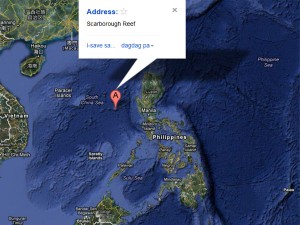BFAR lays traps to help fishermen affected by Panatag ban
The Bureau of Fisheries and Aquatic Resources (BFAR) announced on Monday it would step up the deployment of aggregate fishing devices in the waters off western Luzon to help local fishermen who were adversely affected by the declaration of a two-month closed fishing season in the disputed Panatag (Scarborough) Shoal.
If all goes well, 160 of the fishing devices, or “payao” as they are called, will be floating off the provinces of Zambales, Pangasinan, Ilocos Norte and Ilocos Sur by the end of June, according to BFAR Director Asis Perez.
The “payao,” each composed of a metallic float—an “anchor” made of stone, rope and leaf fronds—would enable small-scale fishermen who can no longer fish around Panatag by virtue of Fisheries Office Order No. 143 to catch big fish such as tuna in a maximum of four hours, Perez said.
FOO No. 143, which took effect on May 16, declared a “closed season” for municipal and commercial fishing in the area in the wake of the heated territorial dispute between the Philippines and China. The prohibition on fishing will be lifted on July 15 “until further notice,” according to the order.
Perez said that of the estimated 10,000 fishermen in the coastal municipalities, “only a small percentage,” or “less than a hundred,” would be affected by the restriction.
Based on his own tally, he said, only a maximum of seven fishing vessels and a minimum of two each day used to fish in the disputed area.
His figures, he said, were based on his own observation. “Last week, I was in Masinloc (Zambales)…I asked around 200 fishermen how many went to fish at (Panatag Shoal), and only three raised their hands,” he said.
His figures are much smaller than the reported 2,000 fishermen in the municipality who would not have a source of livelihood as a result of the “closed season.”
According to a statement to reporters, some 30 to 40 marginal fishermen can benefit from each “payao.”
Ten “payao” have been deployed in the vicinities of Masinloc, Candelaria, Sta. Cruz and Palauig in Zambales; and in La Union, Ilocos Sur and Ilocos Norte.
The 150 remaining “payao,” Perez said, would be similarly installed about 15 kilometers, or 7.8 nautical miles, from the shore.
He said the “payao,” which attract the small fish which the bigger fish eat, could help local fishermen catch the bigger fish without having to go to the reef.
He added that it would only take a week or two for the device to be populated with fish catch.
